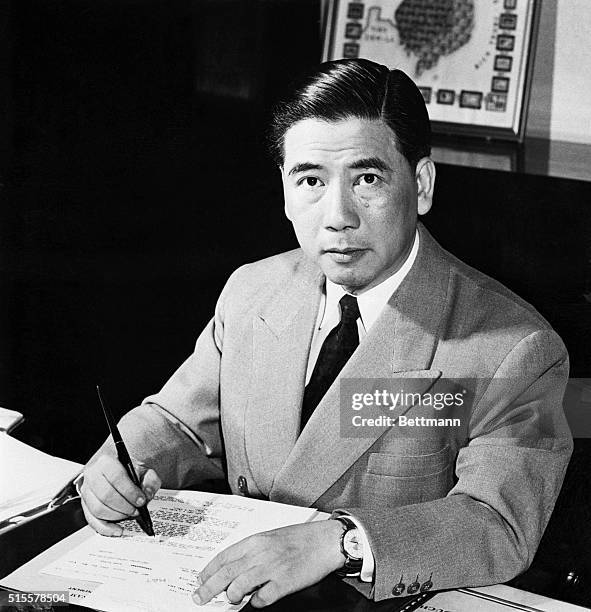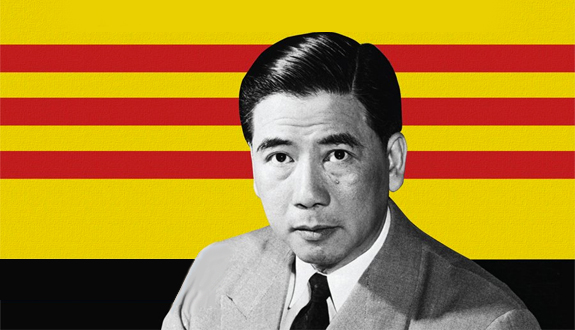Ngo Dinh Diem, a pivotal figure in Vietnamese history, served as the first President of the Republic of Vietnam from 1955 to 1963. Born on January 3, 1901, in Quang Binh province, Diem’s political career was marked by both accomplishments and controversy. His leadership during a tumultuous period in Vietnam’s history left an indelible mark on the nation.
iem was born into a wealthy and prominent Catholic family in central Vietnam. He was educated in seminaries in Vietnam and France, and he became a fervent Catholic. After returning to Vietnam, he became involved in politics, and he was appointed governor of his native province of Quang Ngai in 1933.

Who Was Ngo Dinh Diem: Unraveling the Legacy |Righticks Foundations
In 1954, after the French defeat at Dien Bien Phu, Diem was appointed prime minister of the State of Vietnam by Emperor Bảo Đại. He quickly consolidated his power, and in a referendum held in 1955, he overthrew Bao Dai and established himself as president of South Vietnam.
Diem’s rule was authoritarian and repressive. He suppressed political opposition, particularly from Buddhists, and he cracked down on dissent. He also alienated many Vietnamese with his pro-Catholic policies, which favored Catholics in education and employment.
Diem’s policies contributed to the growing insurgency of the Viet Cong, a communist guerrilla movement that was supported by North Vietnam. The United States provided substantial military and economic aid to South Vietnam during Diem’s rule, but his government was increasingly isolated and unpopular.
In 1963, a group of South Vietnamese generals, with the support of the United States, launched a coup against Diem. He and his brother, Ngo Dinh Nhu, were assassinated during the coup.
Diem’s legacy is complex and controversial. He is seen by some as a nationalist hero who tried to prevent the spread of communism in Vietnam. Others see him as a corrupt and repressive dictator who contributed to the Vietnam War.
Here are some of the key events in Diem’s life:
1901: Born into a wealthy and prominent Catholic family in central Vietnam.
1933: Appointed governor of Quang Ngai province.
1954: Appointed prime minister of the State of Vietnam.
1955: Overthrows Bao Dai and establishes himself as president of South Vietnam.
1963: Assassinated during a coup d’état.
Early Life:
Ngo Dinh Diem hailed from a devout Catholic family, a minority in predominantly Buddhist Vietnam. His education took him to France, where he studied at the prestigious School of Public Administration in Paris. Diem’s early exposure to Western political ideas significantly influenced his later political beliefs.
Political Rise:
Diem’s political career began to take shape in the 1930s when he entered the Vietnamese civil service under French colonial rule. However, his anti-colonial stance led to conflicts with the French authorities. After a period of exile, he returned to Vietnam in 1954, just as the country was divided into North and South after the Geneva Accords.
Presidential Tenure:
In 1955, amidst allegations of election fraud, Ngo Dinh Diem assumed the presidency of the newly established Republic of Vietnam. His regime faced numerous challenges, including internal dissent, the rise of the Viet Cong insurgency, and external pressure from the North Vietnamese government. Diem’s leadership style, marked by authoritarian tendencies and favoritism towards the Catholic minority, contributed to growing discontent among the predominantly Buddhist population.
Controversial Policies:
Diem’s policies, such as the Strategic Hamlet Program and the persecution of Buddhists, exacerbated tensions within South Vietnam. The discriminatory measures against Buddhists triggered widespread protests, leading to international condemnation and scrutiny. The self-immolation of Buddhist monk Thich Quang Duc in 1963 became a symbol of the growing discontent against Diem’s rule.
Downfall and Legacy:
Amidst increasing unrest, the United States, previously a supporter of Diem, withdrew its backing. In a coup on November 1, 1963, Diem was overthrown and subsequently executed. His death marked a turning point in the Vietnam War, but the legacy of his controversial presidency endured.
Conclusion:
Ngo Dinh Diem remains a complex and enigmatic figure in Vietnamese history. While he pursued anti-communist policies and aimed to consolidate power in the South, his autocratic rule and discriminatory practices sowed the seeds of discontent that ultimately led to his downfall. Diem’s legacy is one of both accomplishment and controversy, reflecting the intricate tapestry of Vietnam’s political history in the mid-20th century. Understanding Diem’s role is crucial for comprehending the complexities of the Vietnam War and its enduring impact on the nation.
FAQs
- What were Ngo Dinh Diem’s main achievements?
Ngo Dinh Diem initiated infrastructural projects, educational reforms, and land redistribution, aiming to modernize Vietnam and uplift its citizens.
- Why was Ngo Dinh Diem’s rule controversial?
His governance style, marked by authoritarianism and allegations of nepotism, human rights violations, and political suppression, sparked significant opposition.
- How did Ngo Dinh Diem’s regime end?
A coup, supported by dissidents and the U.S. administration, led to his overthrow and subsequent assassination in 1963.
- What was Ngo Dinh Diem’s background before entering politics?
Diem hailed from a Catholic noble family and received education in French institutions, shaping his political ideologies.
- What was the impact of Ngo Dinh Diem’s rule on Vietnam?
His tenure witnessed both progress through reforms and dissent due to authoritarian governance, leaving a complicated legacy in Vietnamese history.
- How is Ngo Dinh Diem remembered today?
Ngo Dinh Diem’s legacy remains a subject of debate, with some acknowledging his efforts for progress and others critiquing his authoritarian methods.
Read More:- Empowering Futures: NGOs Committed To Child Education
Read More:- NAVIGATING THE EDUCATIONAL ODYSSEY: A GUIDE TO CHOOSING THE RIGHT SCHOOL FOR YOUR CHILD

